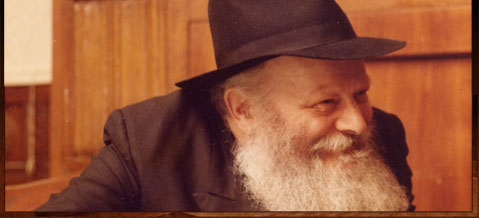Rabbi Nissen Mangel
6 July 2023
As a yeshivah student of marriageable age, I decided to consult with the Rebbe. The next time I had an audience with him, during a visit from Montreal in 1958, I presented a few matchmakers’ suggestions I had received. Surprisingly, however, the Rebbe didn’t approve of any of them. Instead, he turned to me with a suggestion of his own.
I thought he was about to present the name of a prospective partner for me. Instead he began speaking to me about two works by the Alter Rebbe – his Shulchan Aruch, Code of Jewish Law, and Likkutei Torah, a collection of chasidic discourses. Both of these works needed some revisions, the Rebbe explained: They had mistakes, certain sections of the Shulchan Aruch had been deleted by Russian censors, and others were missing source notes. “My suggestion,” he concluded, “is that you undertake to do this work.”
“I’ll be very happy to do it,” I replied.
“And which would you like to do first?”
In an audience the year before, the Rebbe had instructed me to study Likkutei Torah five times, and thank G-d I had managed to learn it very thoroughly. “I think I already know Likkutei Torah a little,” I told the Rebbe, “so I would prefer to choose Shulchan Aruch.”
The Rebbe agreed, and I went back to Montreal to work. For every law the Alter Rebbe wrote, I would write what the sources of that law were, from the Talmud down through the later Halachic authorities like Maimonides, the original Code of Jewish Law, the Magen Avraham, etc. I did this for a few chapters, and then came back to the Rebbe to see if he approved of the way I was doing it.
The Rebbe looked through my work very thoroughly, and then said: “This wasn’t the Alter Rebbe’s style.” In the source notes that we do have from the Alter Rebbe – he did originally write sources, but the majority were lost – he just cites the most recent Halachic authority from which he draws his opinion without tracing it back to its original source in the Talmud or the like.
After revising the style of my work, I continued to periodically send the Rebbe all of the material I produced, but there was generally very little he would change.
Time went on. The work could be difficult, and there were times I would spend hours looking for the source of a single law. On one occasion, I explained to the Rebbe that if I couldn’t find a source for something, I wouldn’t proceed to the next law.
“Why don’t you emulate the Minchas Chinuch?” he asked, referring to a 19th-century scholarly Halachic work. Often, after a long discussion the author would write, “I don’t have time to delve further into this subject, but when the time comes, I will return to it.” The Rebbe advised me to do the same.
The Rebbe wanted all the notes on the entire Shulchan Aruch to be completed as soon as possible, and he urged me to work quickly. During an audience in 1961, he told me that I could see the entire project to its completion within one year. By then I had gotten married and was living in New York.
“Literally? In one year?” I asked. It was like asking someone to jump to the moon.
Seeing my astonishment, the Rebbe suggested, as an incentive, that I bring my work to him every week after Shabbat. There were a couple of other people working on publishing projects – Rabbis Yoel Kahn and Aharon Chitrik – who were asked to do the same.
For several weeks, from around Pesach until Shavuot, the three of us would meet with the Rebbe every week. Right after Shabbat, even before the Havdalah service, we would stand by the door of his office, and then go inside and hand in our work. Often, I would take advantage of these moments to ask the Rebbe questions.
For example, I would sometimes find that the Alter Rebbe stated a law one way, while the earlier authorities put it differently. It would take me a long time to reconcile these views, or to find a source for the Alter Rebbe’s opinion, but when I would ask the Rebbe about it, he would immediately be able to suggest where I would find my answer: “Why don’t you look over there?”
After seven weeks of these Motzei Shabbat meetings, the Rebbe felt that he had given us enough of an impetus to work faster, and we carried on by ourselves. Thank G-d, it all came out successfully, although it wasn’t printed straight away.
After finishing the Shulchan Aruch, I thought that I would embark on Likkutei Torah. Instead, the Rebbe instructed me to work on a different book of the Alter Rebbe – the Tanya. Specifically, he wanted me to translate the second section, Shaar haYichud vehaEmunah, into English.
I would work on one chapter at a time, then send it in for the Rebbe to edit.
In general, Hebrew chasidic writings can have very long sentences, which doesn’t flow in English, so I would break the text up into paragraphs and sentences. On one occasion, there was a sentence that contained the word “etc.” three times, and when I broke it up, I had the audacity to only write it twice. But the Rebbe wanted the translation to be so precise that when he looked it over, he added the third “etc.”
Again, after seven chapters, the Rebbe told me that since I had mastered the proper style, I could continue on my own.
The first thing that was actually printed from the Shluchan Aruch was the Laws of Torah Study, Hilchot Talmud Torah. I had finished this section within the first couple of months, but the Rebbe kept the manuscript for a few years. By that time, I had already finished my translation of Shaar haYichud vehaEmunah.
I was actually out of New York in 1965, on vacation, when the Rebbe’s secretary called me up. “The Rebbe wants both Hilchot Talmud Torah and Shaar haYichud vehaEmunah to be published in time for the 12th of Tammuz,” the anniversary of Previous Rebbe’s liberation from Soviet imprisonment. I rushed back and wrote an introduction for both works, so that they could be published in time. On the day that they were published, the Rebbe went to the resting place of the Previous Rebbe, and brought both publications along with him. Later, at the farbrengen, he delivered a truly ingenious talk on the opening words of the Laws of Torah Study.
A similar thing happened when I finished working on the rest of the Shulchan Aruch. The Rebbe kept my notes in his drawer for over a year, before deciding to publish them; everything has its time.
Since then, newer editions of the Shulchan Aruch have been printed – with expanded source notes – but the edition I worked on was reprinted many times. Being able to work on it, along with the Alter Rebbe’s other major works – the prayer book and the Tanya – has been an honor and a privilege.
Rabbi Nissen Mangel is an author and lecturer who serves as rabbi of congregation Ksav Sofer in Brooklyn. He was interviewed in December of 2011 and March of 2012.
As a yeshivah student of marriageable age, I decided to consult with the Rebbe. The next time I had an audience with him, during a visit from Montreal in 1958, I presented a few matchmakers’ suggestions I had received. Surprisingly, however, the Rebbe didn’t approve of any of them. Instead, he turned to me with a suggestion of his own.
I thought he was about to present the name of a prospective partner for me. Instead he began speaking to me about two works by the Alter Rebbe – his Shulchan Aruch, Code of Jewish Law, and Likkutei Torah, a collection of chasidic discourses. Both of these works needed some revisions, the Rebbe explained: They had mistakes, certain sections of the Shulchan Aruch had been deleted by Russian censors, and others were missing source notes. “My suggestion,” he concluded, “is that you undertake to do this work.”
“I’ll be very happy to do it,” I replied.
“And which would you like to do first?”
In an audience the year before, the Rebbe had instructed me to study Likkutei Torah five times, and thank G-d I had managed to learn it very thoroughly. “I think I already know Likkutei Torah a little,” I told the Rebbe, “so I would prefer to choose Shulchan Aruch.”
The Rebbe agreed, and I went back to Montreal to work. For every law the Alter Rebbe wrote, I would write what the sources of that law were, from the Talmud down through the later Halachic authorities like Maimonides, the original Code of Jewish Law, the Magen Avraham, etc. I did this for a few chapters, and then came back to the Rebbe to see if he approved of the way I was doing it.
The Rebbe looked through my work very thoroughly, and then said: “This wasn’t the Alter Rebbe’s style.” In the source notes that we do have from the Alter Rebbe – he did originally write sources, but the majority were lost – he just cites the most recent Halachic authority from which he draws his opinion without tracing it back to its original source in the Talmud or the like.
After revising the style of my work, I continued to periodically send the Rebbe all of the material I produced, but there was generally very little he would change.
Time went on. The work could be difficult, and there were times I would spend hours looking for the source of a single law. On one occasion, I explained to the Rebbe that if I couldn’t find a source for something, I wouldn’t proceed to the next law.
“Why don’t you emulate the Minchas Chinuch?” he asked, referring to a 19th-century scholarly Halachic work. Often, after a long discussion the author would write, “I don’t have time to delve further into this subject, but when the time comes, I will return to it.” The Rebbe advised me to do the same.
The Rebbe wanted all the notes on the entire Shulchan Aruch to be completed as soon as possible, and he urged me to work quickly. During an audience in 1961, he told me that I could see the entire project to its completion within one year. By then I had gotten married and was living in New York.
“Literally? In one year?” I asked. It was like asking someone to jump to the moon.
Seeing my astonishment, the Rebbe suggested, as an incentive, that I bring my work to him every week after Shabbat. There were a couple of other people working on publishing projects – Rabbis Yoel Kahn and Aharon Chitrik – who were asked to do the same.
For several weeks, from around Pesach until Shavuot, the three of us would meet with the Rebbe every week. Right after Shabbat, even before the Havdalah service, we would stand by the door of his office, and then go inside and hand in our work. Often, I would take advantage of these moments to ask the Rebbe questions.
For example, I would sometimes find that the Alter Rebbe stated a law one way, while the earlier authorities put it differently. It would take me a long time to reconcile these views, or to find a source for the Alter Rebbe’s opinion, but when I would ask the Rebbe about it, he would immediately be able to suggest where I would find my answer: “Why don’t you look over there?”
After seven weeks of these Motzei Shabbat meetings, the Rebbe felt that he had given us enough of an impetus to work faster, and we carried on by ourselves. Thank G-d, it all came out successfully, although it wasn’t printed straight away.
After finishing the Shulchan Aruch, I thought that I would embark on Likkutei Torah. Instead, the Rebbe instructed me to work on a different book of the Alter Rebbe – the Tanya. Specifically, he wanted me to translate the second section, Shaar haYichud vehaEmunah, into English.
I would work on one chapter at a time, then send it in for the Rebbe to edit.
In general, Hebrew chasidic writings can have very long sentences, which doesn’t flow in English, so I would break the text up into paragraphs and sentences. On one occasion, there was a sentence that contained the word “etc.” three times, and when I broke it up, I had the audacity to only write it twice. But the Rebbe wanted the translation to be so precise that when he looked it over, he added the third “etc.”
Again, after seven chapters, the Rebbe told me that since I had mastered the proper style, I could continue on my own.
The first thing that was actually printed from the Shluchan Aruch was the Laws of Torah Study, Hilchot Talmud Torah. I had finished this section within the first couple of months, but the Rebbe kept the manuscript for a few years. By that time, I had already finished my translation of Shaar haYichud vehaEmunah.
I was actually out of New York in 1965, on vacation, when the Rebbe’s secretary called me up. “The Rebbe wants both Hilchot Talmud Torah and Shaar haYichud vehaEmunah to be published in time for the 12th of Tammuz,” the anniversary of Previous Rebbe’s liberation from Soviet imprisonment. I rushed back and wrote an introduction for both works, so that they could be published in time. On the day that they were published, the Rebbe went to the resting place of the Previous Rebbe, and brought both publications along with him. Later, at the farbrengen, he delivered a truly ingenious talk on the opening words of the Laws of Torah Study.
A similar thing happened when I finished working on the rest of the Shulchan Aruch. The Rebbe kept my notes in his drawer for over a year, before deciding to publish them; everything has its time.
Since then, newer editions of the Shulchan Aruch have been printed – with expanded source notes – but the edition I worked on was reprinted many times. Being able to work on it, along with the Alter Rebbe’s other major works – the prayer book and the Tanya – has been an honor and a privilege.
Rabbi Nissen Mangel is an author and lecturer who serves as rabbi of congregation Ksav Sofer in Brooklyn. He was interviewed in December of 2011 and March of 2012.





